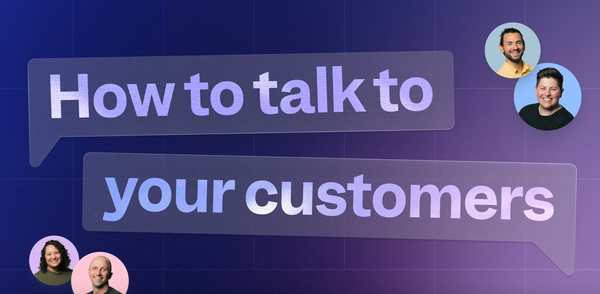The Double-Edged Sword of AI SDRs in Modern Sales

AI Sales Development Representatives (SDRs) are simultaneously gaining traction and experiencing setbacks. Despite hearing about significant growth and turnover at AI SDR companies on the same day, it’s clear why they may not succeed in the long run.
We’ve seen this scenario unfold before, albeit on a smaller scale.
This is particularly concerning given the current state of pipeline generation.
A decade ago, we automated sales activities with Sales Engagement Platforms. Humans operated these automated systems, executing tasks at scale. For most companies, AI SDRs will merely replace humans, running the same systems and automations at ten times the volume. If these systems don’t work at their current scale, why would they succeed at a larger scale?
They won't. This phenomenon is known as the law of diminishing returns.
While AI SDRs might be effective initially, their success won’t be sustainable.
It took eight years for the effectiveness of Sales Engagement Platforms to decline from a competitive advantage to an underperforming baseline, primarily due to the excessive volume. With AI, this decline will occur in less than two years, leading to a more significant mess than Sales Engagement Platforms did.
To be clear, I believe AI SDRs are a logical evolution and I still have faith in Sales Engagement Platforms. However, I don't trust the people who will implement AI SDRs. They will replicate the mistakes made with Sales Engagement Platforms, avoiding the hard work of system improvement and simply increasing volume.
Sales is a numbers game, and this works both ways. Doing too little results in failure, and doing too much yields the same outcome. AI SDRs make it too easy to overdo it, and people will always choose the path of least resistance, even if it’s detrimental.
These users will undermine the potential of AI SDRs, just as they did with Sales Engagement Platforms.
AI Sales Development Representatives (SDRs) are at the center of a polarizing trend, experiencing both rapid growth and significant churn simultaneously. This paradox raises important questions about their long-term viability.
A decade ago, we witnessed the rise of Sales Engagement Platforms, which automated sales activities and allowed humans to execute tasks at scale. This innovation promised to revolutionize pipeline generation, but it eventually led to diminishing returns. Companies, in their eagerness to leverage these tools, cranked up the volume, leading to a decline in their effectiveness.
AI SDRs are poised to follow a similar trajectory. For many companies, AI SDRs will simply replace human operators, running the same systems at ten times the volume. However, if these systems aren’t effective at their current scale, increasing the volume will only exacerbate the problem. This is a classic case of the law of diminishing returns.
While AI SDRs may provide short-term gains, their long-term effectiveness is questionable. The rapid pace at which AI operates could accelerate the decline we saw with Sales Engagement Platforms, reducing the time it takes to go from a competitive edge to an underperforming baseline.
Despite these concerns, I believe AI SDRs represent a logical evolution in sales technology. The challenge lies not with the technology itself, but with how it is implemented. Many users will likely repeat the mistakes made with Sales Engagement Platforms, avoiding the hard work of system improvement and opting for a volume-based approach.
Sales is inherently a numbers game, and success requires a balance. Doing too little results in failure, but doing too much can be equally detrimental. AI SDRs make it too easy to overdo it, and people tend to choose the path of least resistance, even when it’s counterproductive.
In conclusion, while AI SDRs have the potential to transform sales, their success hinges on thoughtful implementation and a commitment to continuous improvement. Without this, the same pitfalls that plagued Sales Engagement Platforms will undermine the promise of AI SDRs.
Navigating the Promise and Pitfalls of AI SDRs in Sales
The advent of AI Sales Development Representatives (SDRs) has ushered in a new era in sales, promising unprecedented efficiency and scalability. However, as with any transformative technology, AI SDRs come with their own set of challenges. While we hear about rapid growth in the AI SDR space, we also see significant churn, raising questions about their long-term viability. This blog delves into the potential and pitfalls of AI SDRs, drawing parallels with the rise and fall of Sales Engagement Platforms over the past decade.
The Rise of AI SDRs: A Double-Edged Sword
AI SDRs are designed to automate and optimize the initial stages of the sales process. By leveraging machine learning and natural language processing, these tools can handle tasks such as lead generation, initial outreach, and follow-ups with remarkable speed and accuracy. Companies adopting AI SDRs often report impressive gains in efficiency and productivity, but these gains come with caveats.
On one hand, AI SDRs can process large volumes of data and engage with potential customers at a scale that would be impossible for human SDRs. This capability can significantly boost pipeline generation and provide a competitive edge. On the other hand, the very features that make AI SDRs attractive can also lead to their downfall if not managed properly.
The Historical Parallel: Sales Engagement Platforms
To understand the potential pitfalls of AI SDRs, it's instructive to look back at the history of Sales Engagement Platforms. A decade ago, these platforms revolutionized sales by automating outreach and follow-up processes. Sales teams could scale their efforts, reaching more prospects with less effort. Initially, this led to a competitive advantage for early adopters.
However, over time, the effectiveness of these platforms diminished. Companies, eager to maximize their ROI, cranked up the volume of automated communications. This led to an oversaturation of the market, with prospects receiving a flood of generic, impersonal messages. The initial competitive edge gave way to diminishing returns, and what was once a game-changing tool became an underperforming baseline.
The Law of Diminishing Returns
The law of diminishing returns is a key concept in this discussion. It states that as you increase the amount of a single input (in this case, automated outreach), the incremental gains from each additional unit of input will eventually decrease. This principle applies to AI SDRs just as it did to Sales Engagement Platforms.
AI SDRs can handle outreach at a scale far beyond human capability, but this doesn't mean that more is always better. When companies increase the volume of automated outreach without improving the quality of interactions, they risk alienating potential customers. The initial efficiency gains are quickly offset by a decline in engagement and conversion rates.
The Current State of Pipeline Generation
The current state of pipeline generation adds another layer of complexity. In today's competitive market, generating and maintaining a robust sales pipeline is more challenging than ever. Companies are under immense pressure to find new leads and nurture existing ones. AI SDRs offer a tantalizing solution to these challenges, but their effectiveness depends on how they are implemented.
The Human Factor
One of the critical factors that will determine the success or failure of AI SDRs is human involvement. While AI can automate many tasks, human oversight and intervention are essential for ensuring that these systems are used effectively. Unfortunately, many companies may be tempted to rely too heavily on automation, neglecting the need for continuous improvement and human touch.
The success of AI SDRs hinges on the ability of companies to integrate these tools into their existing workflows in a way that enhances, rather than replaces, human efforts. This requires a commitment to ongoing training, monitoring, and optimization. Companies must be willing to invest in improving their systems, rather than simply cranking up the volume of automated outreach.
Balancing Quantity and Quality
Sales is inherently a numbers game, but it's crucial to strike the right balance between quantity and quality. Doing too little will result in missed opportunities, while doing too much can overwhelm prospects and lead to diminishing returns. AI SDRs make it easy to scale up outreach efforts, but this must be done thoughtfully and strategically.
To achieve this balance, companies should focus on the following strategies:
- Segmentation and Targeting: Use AI to segment your audience and tailor your messages to specific groups. This ensures that your outreach is relevant and personalized, rather than generic and impersonal.
- A/B Testing and Optimization: Continuously test different approaches and optimize your campaigns based on the results. This helps you identify what works and refine your strategies over time.
- Quality Over Quantity: Prioritize quality interactions over sheer volume. Focus on building meaningful relationships with prospects, rather than bombarding them with automated messages.
- Human Oversight: Ensure that there is human oversight and intervention at critical points in the sales process. This helps maintain the personal touch that is essential for building trust and rapport with prospects.
The Role of AI in the Future of Sales
Despite the challenges, AI SDRs represent a logical evolution in sales technology. They have the potential to revolutionize the way companies generate and nurture leads, but this potential can only be realized if they are used thoughtfully and strategically.
The future of sales will likely involve a hybrid approach, where AI and human efforts are seamlessly integrated. AI can handle routine tasks and data analysis, freeing up human SDRs to focus on building relationships and closing deals. This hybrid model leverages the strengths of both AI and human intelligence, creating a more effective and efficient sales process.
Conclusion
The rise of AI SDRs presents both opportunities and challenges for modern sales teams. While these tools offer significant potential for improving efficiency and scalability, their success depends on how they are implemented and managed. By learning from the history of Sales Engagement Platforms and applying the principles of balance and continuous improvement, companies can harness the power of AI SDRs without falling into the trap of diminishing returns.
Ultimately, the key to successful AI SDR implementation lies in thoughtful integration, ongoing optimization, and a commitment to quality over quantity. By striking the right balance and maintaining human oversight, companies can unlock the full potential of AI SDRs and achieve sustainable success in the ever-evolving world of sales.


